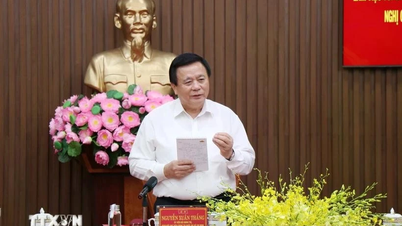The word "can cuoc" in the above sentence means "root, foot". This is a compound word of Chinese origin, combining the two words "can" (根) and "cuoc" (脚). "can" means tree root; foundation, origin... (and other meanings); "cuoc" is human or animal foot; small root of plant (and other meanings).
In Chinese, the compound word can cuon (根脚/跟腳, gēn jiǎo ) refers to the heel; the root of a plant or a building; the basis of a thing; the right shoe size (northern Chinese dialect); immediate succession; servant, helper ("this can cuon is quite loyal to its owner" - National Language Dictionary ). However, in this article, can cuon means "family background, origin, background" ("…, I bit my finger, wrote blood on the paper, wrote down the details of my parents' names and the origin of my can cuon" - Appendix chapter 8 of Journey to the West ).
In Vietnam, the term Identity Card appeared during the French colonial period, translated from the French word Carte d'identité , for example, in the book "Legal Nouns Briefly Explained" (1965) by Tran Thuc Linh, there is a passage: "Identité (carte d'): identity card. Decree dated November 9, 1918 established the identity card" (p.561). On September 6, 1946, the President of the Government of the Democratic Republic of Vietnam issued a decree to use the Citizen Card instead of the Identity Card . Since 1957, the Citizen Card has been replaced by the Identity Card (abbreviated as the identity card or identification paper ). Since 2016, the Identity Card has been replaced by the Citizen Identity Card . On November 27, 2023, the National Assembly passed the Identity Law project, changing the name of the Citizen Identity Card to the Identity Card (effective from July 1, 2024).
In South Vietnam, the term Identity Card was used until April 1975. Although it is a Sino-Vietnamese phrase, Identity Card is not a translation of the corresponding term used by the Chinese, which is the Identity Card (身分證, Shēnfèn zhèng). The prototype of Identity Card appeared in China during the Tang Dynasty, issued by the imperial court under the name of Fish Fu (魚符), used to give to officials. Fish Fu is a wooden or metal object, shaped like a fish, divided into two pieces on the left and right, on which are drilled small holes for fastening, engraved with the official's name, workplace and rank. During the Ming Dynasty, Identity Card was used for all classes of people, called Nha Bai (牙牌). Today, modern Identity Cards in China are mostly high-tech smart cards, capable of being scanned and read by computers.
The Japanese also use the term Identity Document (身分證, みぶん しょう), but they often use the phrase Identity Document (身分証明書, みぶんしょうめいしょ) or the abbreviation ID (English: identity document) - we often call it "identification document".
Nowadays, many countries in the world use different types of identification documents. Some countries do not have identity cards, instead, they use passports; social security cards, bank identification cards or driver's licenses...
Source link



























































































![[OCOP REVIEW] Tu Duyen Syrup - The essence of herbs from the mountains and forests of Nhu Thanh](https://vphoto.vietnam.vn/thumb/402x226/vietnam/resource/IMAGE/2025/6/5/58ca32fce4ec44039e444fbfae7e75ec)






Comment (0)